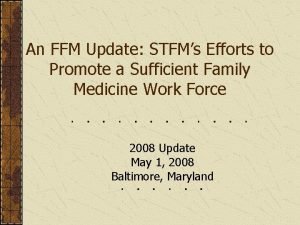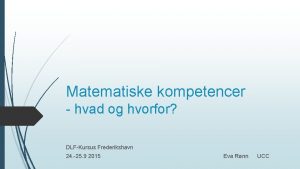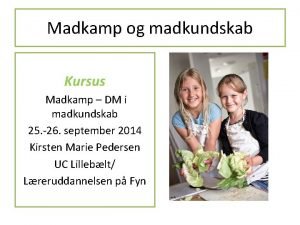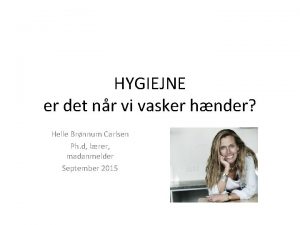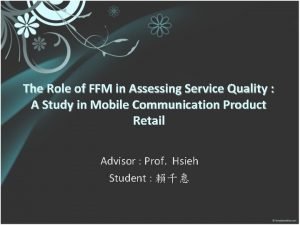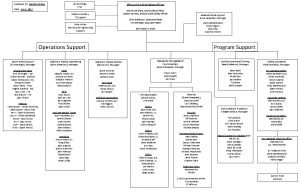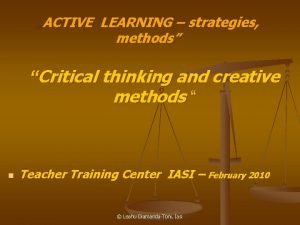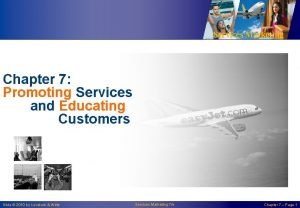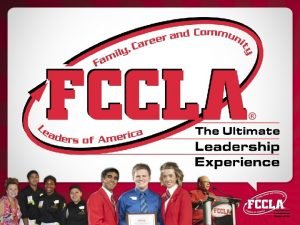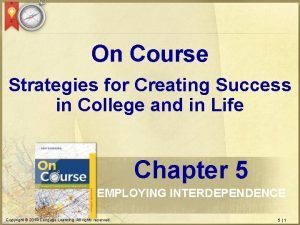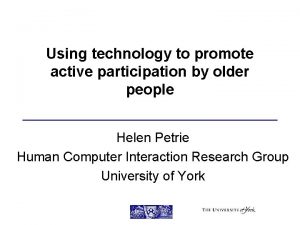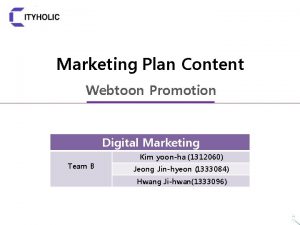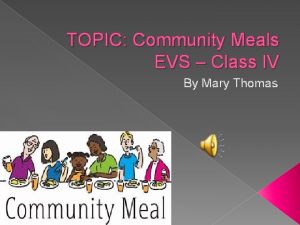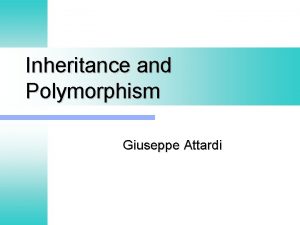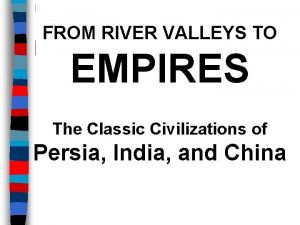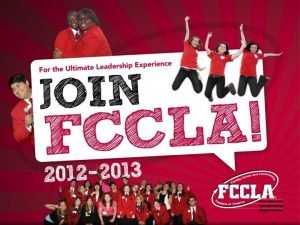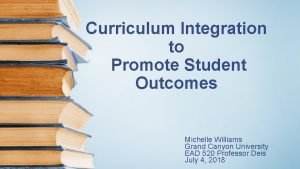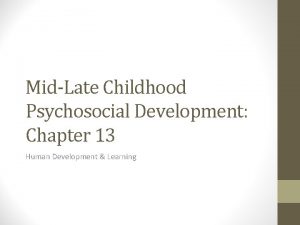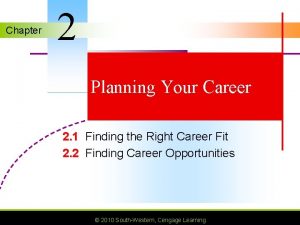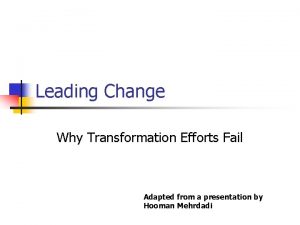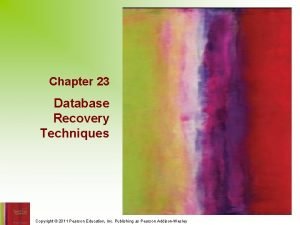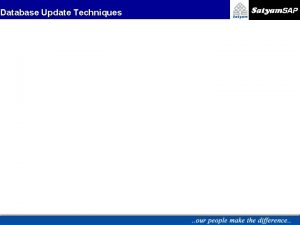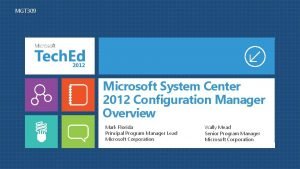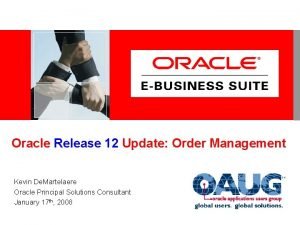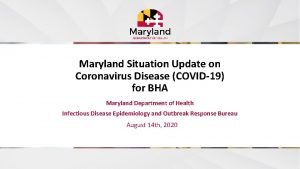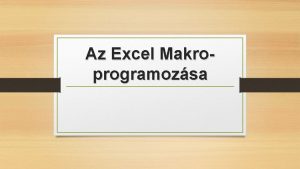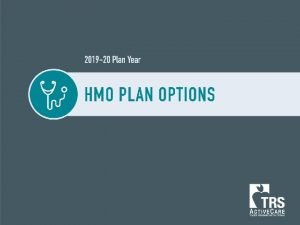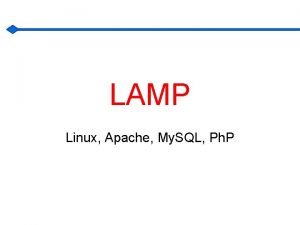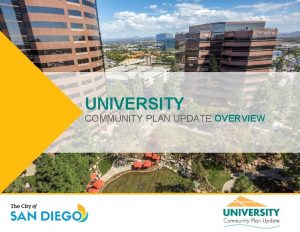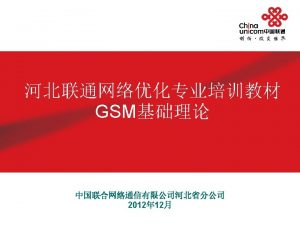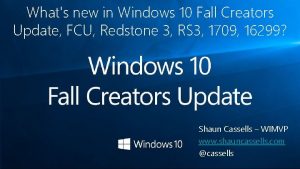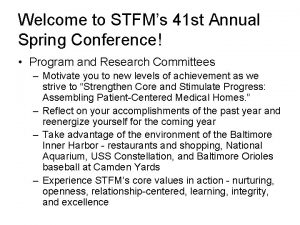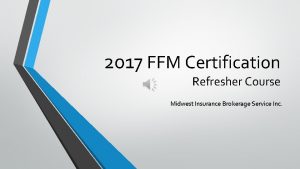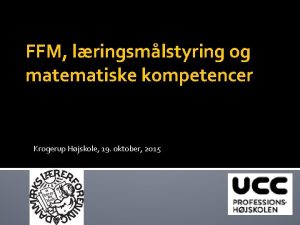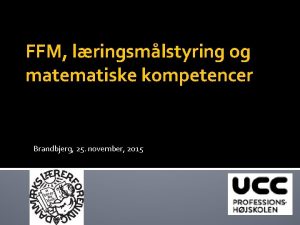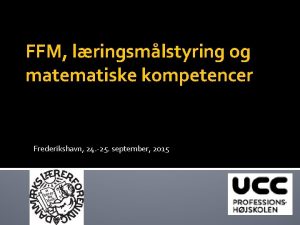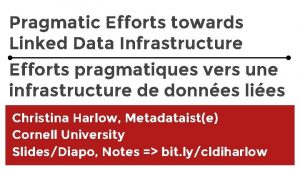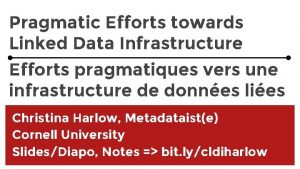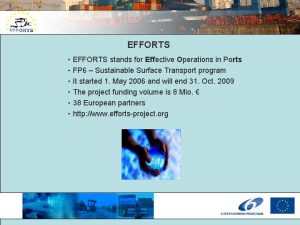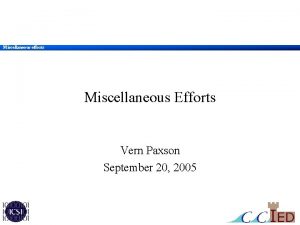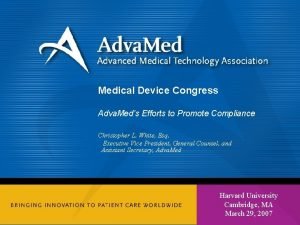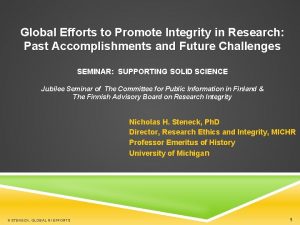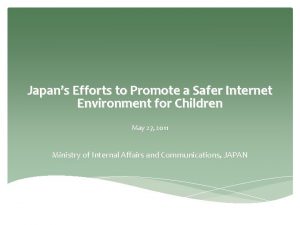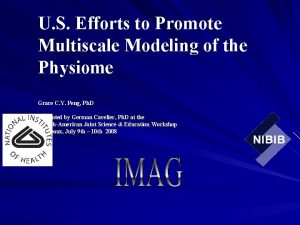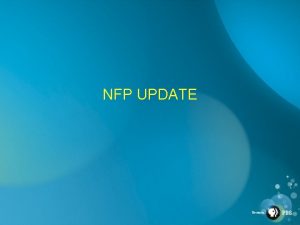An FFM Update STFMs Efforts to Promote a























































- Slides: 55

An FFM Update: STFM’s Efforts to Promote a Sufficient Family Medicine Work Force 2008 Update May 1, 2008 Baltimore, Maryland

Objectives By the end of this session, participants will be able to. . . Describe STFM’s contributions to the Future of Family Medicine Discuss STFM’s four Priority Programs • IMG Resident Academy, a training program for IMGs • Competency-based Curriculum for the New Model • Future. Family. Docs, a program to enhance the premed pipeline • Leadership development Become involved in STFM’s ongoing plans

Agenda Introductions Overview of STFM’s role in FFM and STF Goals Update and discussion of Priority Programs

Special Task Force Members Bill Mygdal, Ed. D, Chair, Past-President Caryl Heaton, DO, Past-President John Rogers, MD, President Jim Tysinger, Ph. D, Program Committee Chair Terry Steyer, MD, Legislative Committee Chair Janice Benson, MD, Board Member at Large Nancy Baker, MD, Board Member at Large Deborah Witt, MD, Board Member at Large Charles Mouton, MD, MS, Ad Hoc Task Force Member Jeff Susman, MD, STFM Ad Hoc Task Force Member Kathy Zoppi, Ph. D, MPH, Ad Hoc Task Force Member Stacy Brungardt, CAE, Executive Director Angela Broderick, CAE, Deputy Executive Director

FFM Strategic Initiatives FFM Educational Initiatives Promoting a Sufficient Family Medicine Workforce Family Medicine Education Life-Long Learning FFM Clinical Initiatives New Model of Family Medicine Electronic Health Records Quality of Care Communication FFM Research Initiative Enhancing the Science of Family Medicine FFM Administrative Initiatives Role of Family Medicine in Academic Health Centers Leadership and Advocacy

STF Goals for 2007 - 2009 Continue current Priority Programs Initiate Leadership Program deferred in first term of STF Connect effectively with other organizations on implementation Integrate STF Priority Program into ongoing responsibilities of STFM Committees and Groups to ensure continued achievement of FFM responsibilities after STF second term ends

FFM STF Priority Programs IMG Resident Academies, a training program for IMGs Competency-based Curriculum for the New Model/Patient-Centered Medical Home (PCMH) Future. Family. Docs, a program to enhance the premed pipeline Leadership development

Meeting Workforce Needs: STFM Academy for International Medical Graduates

Purpose of STFM IMG Academies Capitalize on the rewards IMGs bring to FM programs Address the challenges of training IMGs in our residency programs Entering Resident Academy • Program for IMGs who have matched with FM residencies s May 8 -10 in Philadelphia s June 6 -8 in Chicago

Benefits of Training IMGs Increases diversity; enhances everyone’s cultural competence Provides US grads in FM programs with global education opportunities Increases number of practicing PCPs in urban, underserved, rural, & remote areas.

Challenges of Training IMGs Some IMGs know little about the US healthcare “system” struggle with English possess limited typing/EHR skills Differences between “foreign-born” IMGs and “US-born” IMGs are poorly understood STFM Needs Assessment: IMGs face many challenges IMGs are here in very large numbers

Growing Numbers of IMGs First Year Family Medicine Positions Filled by July 1999 2000 2001 2002 2003 2004 2005 Positions Available 3644 3623 3528 3523 3480 3501 3389 % Filled by IMGs 15 19 30 32 38 38 38 Percentage Filled 97 96 96 95 96 94 97 Source: Pugno et. Al. Results of the 2007 NRMP. Family Medicine, September 2007

Program Director Survey Elements of Orientation Programs with and without separate orientation for IMGs Social encounters Clinical skills assessment Team building experience Reading assignment Programs with a specific orientation for IMGs Programs without a specific orientation for IMGs Cultural immersion experience Cultural competency training English as a second language Keyboard skills Electronic Health Record use Orientation to local institution Orientation to US health system 0 20 40 % of programs 60 80 100

IMG Survey 326 respondents 190 female, 133 male (3 skipped gender) Age range: 26 - 57 (majority in 30’s) Training year: PGY-1: 41% PGY-2: 34% PGY-3: 23% PGY-4: 1% 58/311 (18. 6%) born in the United States 212 said English was the primary language of their medical school training

Medical Schools Attended 24% = India 11% = Caribbean schools 7% = Philippines 5% = Dominica 5% = Pakistan 3% = Colombia 3% = Russia, Mexico

Feelings of Comfort Likert scale: 1 = very uncomfortable to 5 = very comfortable Presenting to preceptors: Response 3: 29% of respondents Response 4: 33% Discussing feelings with a patient Response 1 or 2: 28% of respondents Response 4: 36% Giving and receiving feedback Response 1 -3: 38% of respondents

Most Challenging Adjustments Learning the culture Language / accent challenges Computer skills, EHR issues Learning the system Medical / legal issues Presenting to preceptors Discrimination (various types)

What Helped the Most Observership Helpful senior residents Warm, supportive residency environment Family and values from home country “My will power”

Competency-Based Curriculum for the PCMH

Competency-Based Curriculum for the PCMH Goals of CBC Project Develop a model competency based curriculum for teaching important concepts of the new model of family medicine Make resources and tools available on FMDRL Pilot virtual workspace/workgroup

Initial PCMH Areas Advanced Access Group visits Using EHRs Performance Improvement Chronic Care Model Evidence-Based Medicine

Outline for Instructional Units Goals Learning objectives Learner characteristics Teaching and learning activities/instructional methods Support services & needed resources Learner and program evaluation Faculty development/lifelong learning

An Example Group Visit Student Outline Goal The student will have a beginning understanding of the planning and design of group medical visits. Learning Objectives After a one-month outpatient family medicine clerkship, the student will be able to: • See group medical visits as a dynamic, active way to improve patient health and well-being • List key components of a group medical visit (introductions, interactive teaching, brief medical visit, individual goal setting, wrap-up) • Describe four different health issues appropriate for group medical visits in primary care • Apply problem-solving techniques to individual participants on their action plans

Group Visit Student Outline Learner Characteristics Level of Learner: any medical student participating in a longitudinal family medicine outpatient rotation Cultural Competency The medical student will • Value the contributions of the different team members • See the multitude of medical, social, psychological, and community factors that contribute to the health and wellbeing of group medical visit participant

Group Visit Student Outline Pre-Assessment Methods Faculty will interview the student to identify the student’s previous experience and comfort level in groups; knowledge about the particular group focus; and knowledge of motivational interview techniques. Teaching and Learning Activities Students will attend at least one group medical visit during a family medicine outpatient clerkship, participating in the actual visit, the team meetings about the visit, and making follow-up calls to group participants. Instructional methods will be through teaching, modeling, and debriefing before, during and after the session.

Group Visit Student Outline Support Services/Needed Resources An active group medical team that includes, but is not limited to, a physician, nurse/social worker, and medical office assistant Physical space for group medical visit to meet One group medical visit/month, at the minimum Learner and Program Evaluation Learners will be evaluated immediately after the group medical visit session through self-assessment and feedback from faculty and group medical visit team members. Program evaluation by students will be elicited by the group medical visit physician faculty immediately after the group session and by the responsible rotation faculty member at the end of the month rotation (refer to student competencies).

Next Steps Peer review and revision of existing instructional units Enhance look and feel of FMDRL Further collaboration Expansion of modules PEP III

Future. Family. Docs: A program to enhance the premed pipeline

“STFM Plans to Change the Future Through Pre-Medical School Recruitment”* § § “Promote a sufficient family medicine workforce” Consider “how to initiate premedical school recruitment Need “an intensive, personal, public relations drive by each STFM member to find 2 to 3 replacements” Goal is to “guide them, mentor them, and train them to replace us as FPs in the community” *Annals of Family Medicine Vol 4 No 3, May/June 2006


Demographic Predictors Which medical students choose Family Medicine? Rural origin Older age Socioeconomic status Underrepresented minorities



Future Family Docs Campaign Goals Help children from practice communities learn about family medicine Support student entry to medicine Resources Website www. Future. Family. Docs. org Inventory of Programs best practices s Dede Willis, MD, MBA Mentoring Stories- inspiration s Teresa Kulie, MD Buzz and Buttons and Posters s Deborah Witt, MD Toolkit of resources on-line s Carman Whiting, MD

www. futurefamilydocs. org Future. Family. Docs is designed to share information about a whole new movement, where family medicine physicians and educators are getting involved with guiding and inspiring the next generation of family physicians. Future. Family. Docs. org gives you resources on formal mentoring programs and stories of how family educators are making a difference in the future.



Future Family Docs Campaign STFM Linkages and Partnerships • AAMC “Aspiring Docs” www. aamc. org/diversity/aspiringdocs s minority recruitment goal s More AA students College Science majors but not choosing medical school • AHEC- National Area Health Education Centers= NAO s Best known organization to link physicians with students of all ages, in the communities we serve-many rural, many city s NAO-STFM Partnering in progress Susan Moreland, David Pole

By “MU S of M Rural Programs” Contact kanek@health. missouri. edu

AHEC-STFM Collaboration Memorandum of Understanding AHEC-STFM Alliance Background

NAO-STFM Collaboration Coordinating Committee Spotlight Projects Maine “E-mentors” –recruit STFM members W CO “Delta Middle School” MO “Ace’s Plus” CA, SC, HI, LA

Be a Maine Health Careers e. Mentor-Help Introduce Maine Youth to Health Careers! May 2007, Maine (AHEC) Network launched www. Maine. Health. Careers. com For students, guidance counselors Online education activities Matching with live mentors Recruit STFM members as mentors Recruit STFM members to solicit students in their practice communities to sign up

NAO–STFM Collaboration Workgroup With David Pole and Program/Center Directors for each site: Missouri, California, No. Louisiana, and So. Carolina Hawaii, Colorado, and Maine “Mentor” 4 -6 sites Determine best ways to “highlight” programs and track outcomes by program with each site Involve NAO Core in evaluation discussions Present at 2008 STFM conference accepted as 90 min seminar Proposal in for 2008 NAO Conference in Denver Report on Project, Progress and Lessons Learned to Date

STFM Promotion of STFM-AHEC projects Publications Conferences and Meetings Board of Directors Websites

Potentials Collaboration for pipeline success Support primary care education Promote diversity in medical education and the health care profession

Possibilities Join advocacy efforts Joint funding proposals Full fledged, post-pilot demonstration projects Project assessment

STFM Homepage http: //www. stfm. org/index_ex. html Future Family Docs Project www. Future. Family. Docs. com Family Medicine Digital Resources Library http: //www. fmdrl. org/

Leadership Development

Leadership development Summary of leadership development training programs http: //www. stfm. org/leadership/index. htm Leadership needs survey STFM best prepared to develop these efforts Should be a priority for STFM in next 5 years Leadership incubator perspective Developing ‘emerging leaders’ in STFM Groups On and Committees What is needed?

Leadership Survey E-mails sent to 595 members of STFM. Student/Resident member of STFM New to the organization within the past 3 years Attended less than 5 annual conferences. In total, 199 people responded for a final response rate of 33. 4%.

Leadership Survey – Areas of Need Financial Management Grant Writing Budgeting/Financial Issues Working with the media Media Skills Publishing Skills Advocacy Skills 68. 6% 64. 6% 58. 0% 51. 8% 57. 3% 54. 0%

Leadership Survey – Preferred method of learning Most preferred “Developing leaders” track within current STFM conferences Dedicated conference on leadership development Less preferred Web-based leadership development program Interactive 1 -hour web courses Podcasts Static 1 -hour web courses

Leadership Survey – STFM’s Role Developing new leaders should be a priority for the specialty of family medicine in the next 5 years. (92. 5%) Developing new leaders should be a high priority for STFM in the next 5 years (87. 9%) STFM should be the major provider of leadership development programs for family physicians and family medicine educators. (77. 3%)

FFM STF Priority Programs IMG Resident Academies, a training program for IMGs Competency-based Curriculum for the New Model/Patient-Centered Medical Home (PCMH) Future. Family. Docs, a program to enhance the premed pipeline Leadership development

FFM STP Priority Programs Questions Comments How to get involved?
 Ffm update
Ffm update Shadow paging recovery technique
Shadow paging recovery technique Kulturteknikker eksempler
Kulturteknikker eksempler Matematiske kompetencer
Matematiske kompetencer Emu fælles mål madkundskab
Emu fælles mål madkundskab Ffm madkundskab
Ffm madkundskab Qis ffm
Qis ffm Ffm
Ffm Chris chiappini
Chris chiappini Ffm natur og teknologi
Ffm natur og teknologi Active learning strategies to promote critical thinking
Active learning strategies to promote critical thinking How did gibbons v ogden promote nationalism
How did gibbons v ogden promote nationalism Promoting services and educating customers
Promoting services and educating customers To promote personal growth and leadership fccla
To promote personal growth and leadership fccla Promote together
Promote together Which of the following is a strategy to promote leveling?
Which of the following is a strategy to promote leveling? Promote active participation
Promote active participation How do national governing bodies promote sport
How do national governing bodies promote sport Active learning strategies to promote critical thinking
Active learning strategies to promote critical thinking Protect, promote, and improve the health of all people
Protect, promote, and improve the health of all people Promote together
Promote together Webtoon promotion
Webtoon promotion What is community meal
What is community meal Advertising for bookkeeping services
Advertising for bookkeeping services How does polymorphism promote extensibility
How does polymorphism promote extensibility How did the mauryan empire’s army help to promote trade?
How did the mauryan empire’s army help to promote trade? Advertising is a message designed to promote
Advertising is a message designed to promote The three r's in membership fccla
The three r's in membership fccla Promote the greatest good
Promote the greatest good Ead 520
Ead 520 When should you promote hipaa awareness
When should you promote hipaa awareness Collateral duties eval block
Collateral duties eval block Implement tasks that promote reasoning and problem solving
Implement tasks that promote reasoning and problem solving Repeated systematic efforts to inflict harm
Repeated systematic efforts to inflict harm Lesson 3 europe in the muslim world
Lesson 3 europe in the muslim world Analysing consumer market
Analysing consumer market Economics
Economics Anti-corruption efforts
Anti-corruption efforts A(n) is a desired end toward which efforts are directed.
A(n) is a desired end toward which efforts are directed. What is the noun form of advertise
What is the noun form of advertise Match the following
Match the following Why transformation efforts fail
Why transformation efforts fail Recovery techniques based on immediate update
Recovery techniques based on immediate update Database commit is triggered by
Database commit is triggered by Microsoft update
Microsoft update Oracle release management
Oracle release management Mdh situation update
Mdh situation update Application screen update false
Application screen update false Routing area update
Routing area update Swhp coverage update center
Swhp coverage update center Update sql command
Update sql command University community plan update
University community plan update Location update
Location update An update of wallace’s zoogeographic regions of the world
An update of wallace’s zoogeographic regions of the world Language windows 10
Language windows 10 Tom tom go 910
Tom tom go 910
